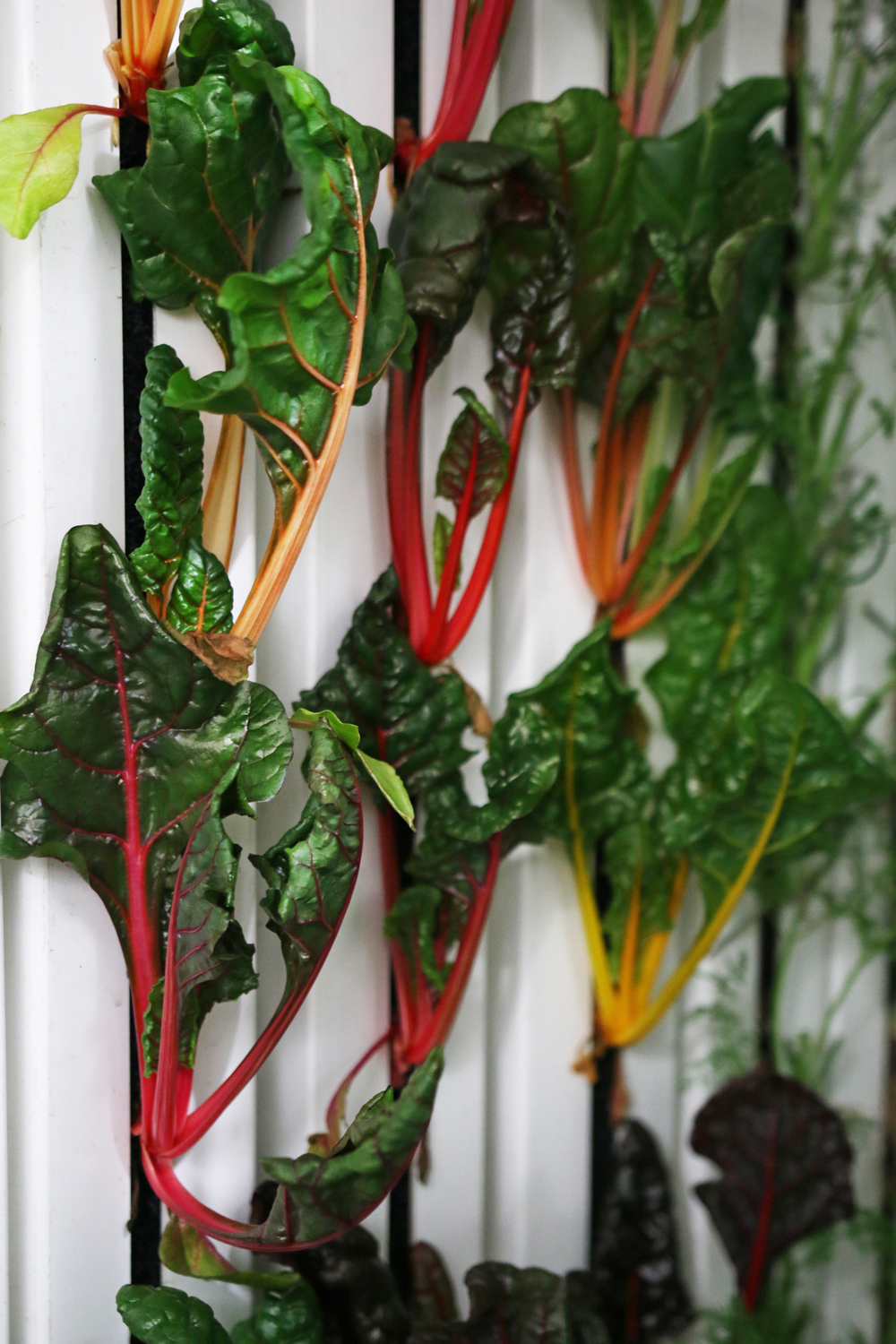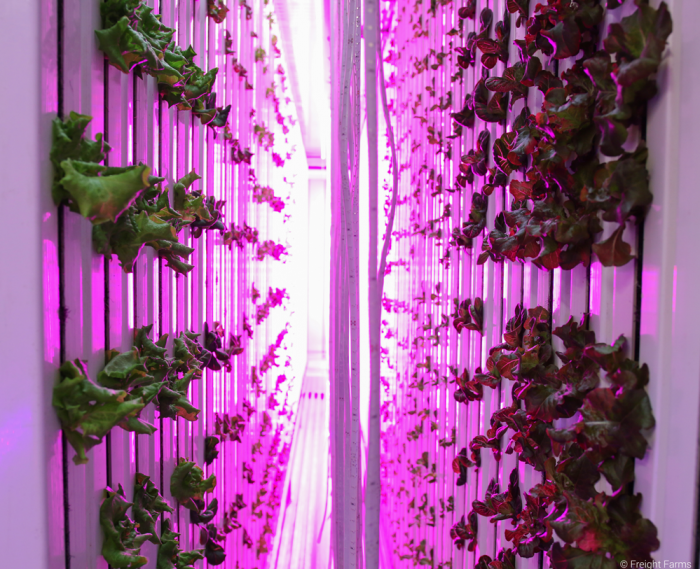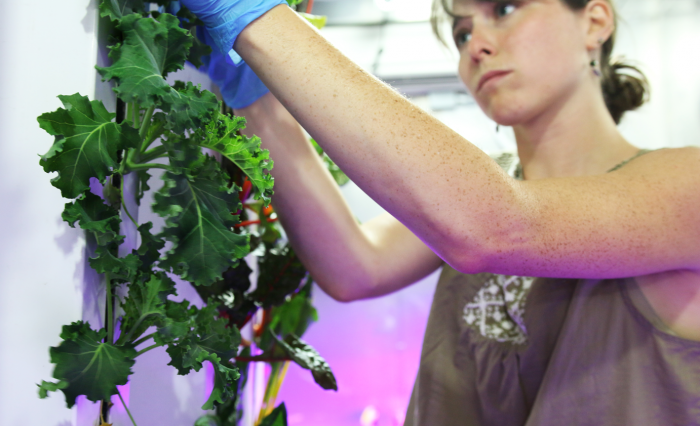How to grow four tons of food a year in a metal box without sunlight

Jaime Silverstein works on a farm every day. Inside a cargo shipping container. In Boston. She is a part of a growing movement of urban farmers intent on using efficient, high-tech hydroponic setups to shorten the distance between city dwellers and their food.
This article is part of a series on jobs of the future paired with our newsletter Clocking In, which covers the impact of emerging technology on the future of work. Sign up here—it’s free!
Farms in the urban jungle
Silverstein works as a crop specialist for Freight Farms, a company that creates what it calls Leafy Green Machines—essentially shipping containers decked out with enough hydroponics equipment and tools to produce two to four tons of produce a year, in any climate or location. “You can put it in a parking lot on concrete or pavement, so you don’t need good soil,” Silverstein says. That’s something most urban areas are short on.

The containers produce primarily—wait for it—leafy greens, like lettuce and Swiss chard, because they’re quick to grow and can be nestled closely together.
And while one of the main selling points is being able to grow climate-sensitive plants in an often cold, snowy place like Boston, Silverstein has her eyes set on a prize further out—much further out: Freight Farms has worked with NASA to see how Leafy Green Machines could go into space. “We have looked at how to speed up the [plants’] grow time and looked at how you can start with seeds and inputs and then regenerate those inputs and seeds over time,” says Silverstein (“inputs” refers to the nutrients plants need to grow, which can be tough to come by in space). “I think that is really cool and interesting work. Not only for space, but to make the whole hydroponics system more sustainable and closed-loop.”
The next generation of farmers
Silverstein is part of a growing group of young, educated people who see farming as a way to make a difference in the world. According to the US Department of Agriculture, the number of farmers aged 25 to 34 increased 2.2 percent between 2007 and 2012—just the second time in the last century that group has grown. Of these new young farmers, 69 percent have college degrees. “I originally went to school for business and environmental policy,” Silverstein says. “I think that agriculture and growing food is one of the most direct and meaningful ways to reduce your environmental footprint.”

Helping life flourish
As a crop specialist, Silverstein is a hybrid of farmer, scientist, and officer worker. When at her desk, she’s an on-call customer service rep, or else she’s analyzing data from Freight Farms’ test-farming setups. The rest of her day, she gets her hands dirty with everything from transplanting small seedlings to experimenting with the best ways to get edible flowers and hot peppers to grow in the purple-light-bathed walls of the company’s containers.
All that one-on-one time with the plants apparently results in some close bonds—and, sadly, some casualties. For Silverstein, this is the toughest part of the job. “You think, I could have done it differently, or these poor plants are not doing so well,” she says. “I want to make them better. You have this relationship with the actual plants themselves.”
Want to learn more about the future of work? Sign up for our newsletter Clocking In!
Keep Reading
Most Popular
Large language models can do jaw-dropping things. But nobody knows exactly why.
And that's a problem. Figuring it out is one of the biggest scientific puzzles of our time and a crucial step towards controlling more powerful future models.
The problem with plug-in hybrids? Their drivers.
Plug-in hybrids are often sold as a transition to EVs, but new data from Europe shows we’re still underestimating the emissions they produce.
Google DeepMind’s new generative model makes Super Mario–like games from scratch
Genie learns how to control games by watching hours and hours of video. It could help train next-gen robots too.
How scientists traced a mysterious covid case back to six toilets
When wastewater surveillance turns into a hunt for a single infected individual, the ethics get tricky.
Stay connected
Get the latest updates from
MIT Technology Review
Discover special offers, top stories, upcoming events, and more.